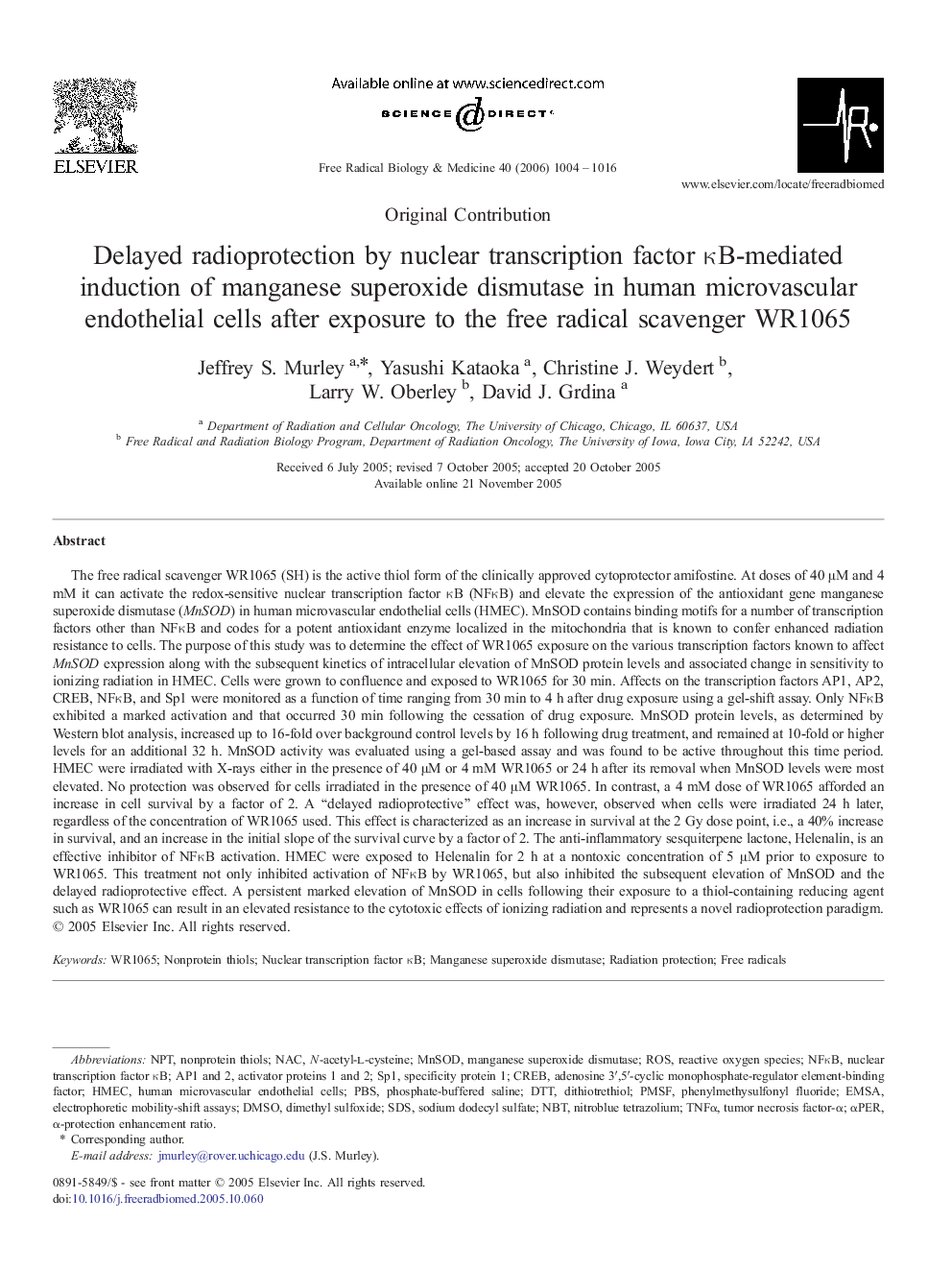| کد مقاله | کد نشریه | سال انتشار | مقاله انگلیسی | نسخه تمام متن |
|---|---|---|---|---|
| 1911680 | 1046828 | 2006 | 13 صفحه PDF | دانلود رایگان |

The free radical scavenger WR1065 (SH) is the active thiol form of the clinically approved cytoprotector amifostine. At doses of 40 μM and 4 mM it can activate the redox-sensitive nuclear transcription factor κB (NFκB) and elevate the expression of the antioxidant gene manganese superoxide dismutase (MnSOD) in human microvascular endothelial cells (HMEC). MnSOD contains binding motifs for a number of transcription factors other than NFκB and codes for a potent antioxidant enzyme localized in the mitochondria that is known to confer enhanced radiation resistance to cells. The purpose of this study was to determine the effect of WR1065 exposure on the various transcription factors known to affect MnSOD expression along with the subsequent kinetics of intracellular elevation of MnSOD protein levels and associated change in sensitivity to ionizing radiation in HMEC. Cells were grown to confluence and exposed to WR1065 for 30 min. Affects on the transcription factors AP1, AP2, CREB, NFκB, and Sp1 were monitored as a function of time ranging from 30 min to 4 h after drug exposure using a gel-shift assay. Only NFκB exhibited a marked activation and that occurred 30 min following the cessation of drug exposure. MnSOD protein levels, as determined by Western blot analysis, increased up to 16-fold over background control levels by 16 h following drug treatment, and remained at 10-fold or higher levels for an additional 32 h. MnSOD activity was evaluated using a gel-based assay and was found to be active throughout this time period. HMEC were irradiated with X-rays either in the presence of 40 μM or 4 mM WR1065 or 24 h after its removal when MnSOD levels were most elevated. No protection was observed for cells irradiated in the presence of 40 μM WR1065. In contrast, a 4 mM dose of WR1065 afforded an increase in cell survival by a factor of 2. A “delayed radioprotective” effect was, however, observed when cells were irradiated 24 h later, regardless of the concentration of WR1065 used. This effect is characterized as an increase in survival at the 2 Gy dose point, i.e., a 40% increase in survival, and an increase in the initial slope of the survival curve by a factor of 2. The anti-inflammatory sesquiterpene lactone, Helenalin, is an effective inhibitor of NFκB activation. HMEC were exposed to Helenalin for 2 h at a nontoxic concentration of 5 μM prior to exposure to WR1065. This treatment not only inhibited activation of NFκB by WR1065, but also inhibited the subsequent elevation of MnSOD and the delayed radioprotective effect. A persistent marked elevation of MnSOD in cells following their exposure to a thiol-containing reducing agent such as WR1065 can result in an elevated resistance to the cytotoxic effects of ionizing radiation and represents a novel radioprotection paradigm.
Journal: Free Radical Biology and Medicine - Volume 40, Issue 6, 15 March 2006, Pages 1004–1016